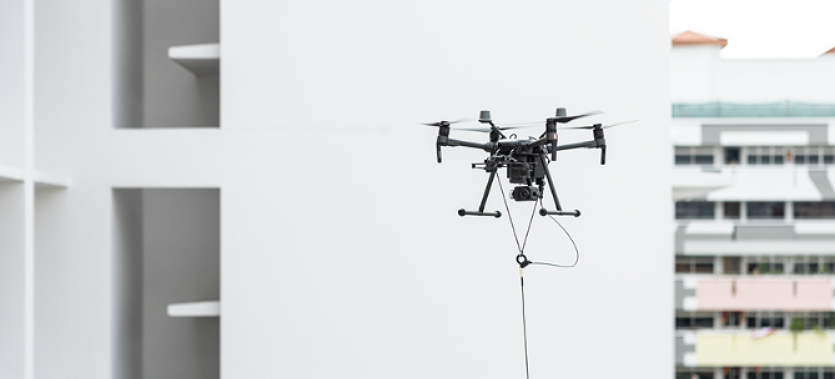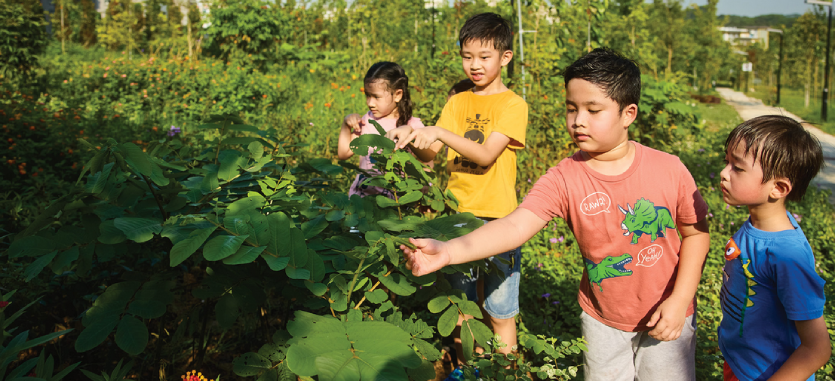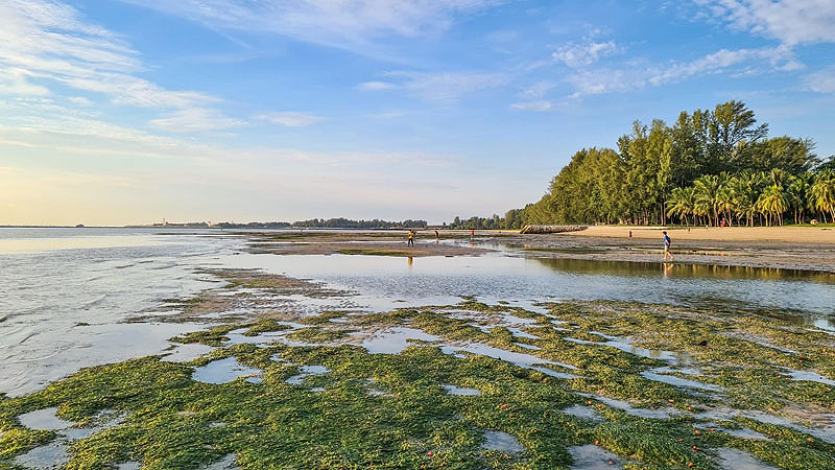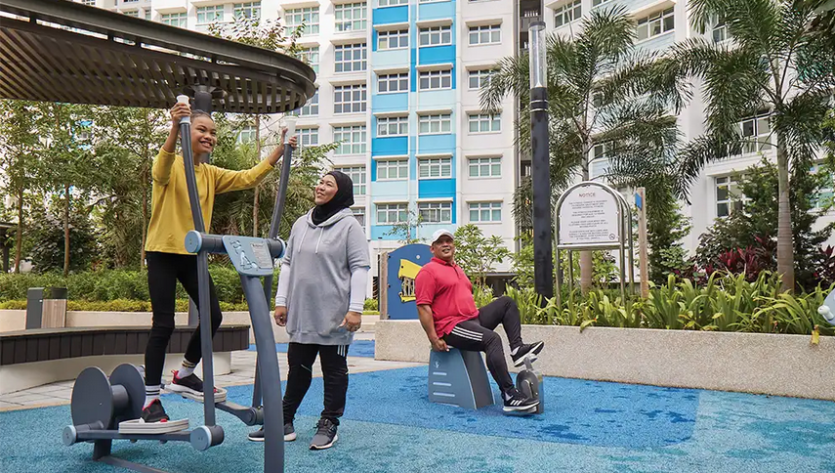About Cities of Tomorrow (CoT)
Launched in 2017, the Cities of Tomorrow (CoT) R&D programme is a multi-agency effort led by MND that seeks to sustain Singapore’s success in the decades ahead by leveraging on Research and Innovation (R&I). It is supported under the NRF’s Research, Innovation & Enterprise (RIE) efforts which are organised along 4 domains, with MND and MSE co-leading the Urban Solutions and Sustainability (USS) domain. The CoT aims to establish Singapore as a highly liveable, sustainable, and resilient city of the future, and as a vibrant urban solutions hub, through a suite of carefully curated research to develop urban solutions that address our national needs.
Building on earlier R&D efforts on space creation and optimisation, the CoT has expanded its research focus in RIE2020 to also support Built Environment (BE) industry transformation efforts. In 2022, the CoT Research & Innovation (R&I) Framework was refreshed to guide research priorities to support other national goals such as the Singapore Green Plan 2030, and in view of emerging challenges such as climate change and ageing infrastructure.
There are six strategic thrusts under the Cities of Tomorrow R&I Framework:

The Cities of Tomorrow R&I Framework supports our national priorities in the following ways:
Built Environment (BE) industry transformation efforts to improve productivity, resilience and sustainability

In the adoption of Prefabricated Prefinished Volumetric Construction (PPVC), building services are pre-installed in modules off-site. (Photo credit: BCA)
- Productive Construction
Traditionally, the construction industry is manpower intensive and lagging in technology adoption. Over the years, we have invested in various technologies to improve productivity, and by taking an Integrated Planning & Design approach. Construction is becoming more manufacturing-like - the use of design for manufacturing and assembly (DfMA) technologies, such as prefabricated prefinished volumetric construction (PPVC), Advanced Precast Construction System, Mass Engineered Timber and Prefabricated Mechanical, Electrical and Plumbing system to produce building modules off-site in a controlled environment before assembling them on-site, has been deployed extensively.
Another example is the Smart Integrated Construction System, to be co-developed by HDB and NTU, aimed at facilitating data-sharing and synergising construction processes across the industry partners through a central digital platform. Part of this project includes the development of a smart tracking system for the management of precast components from production to delivery, hence improving the productivity from design to production and construction phases.
For the next leap, we are exploring the use of advanced additive manufacturing techniques in 3D concrete printing, coupled with the increased use of robotics & automation in construction.

Drones enable greater efficiency and accuracy in the visual inspection of façades at height via high- definition visuals. (Photo credit: BCA)
- Resilient Infrastructure
Our ageing infrastructure requires closer monitoring and pre-emptive repair regimes. As we move away from manual inspections which are manpower and time intensive, we will need to build capabilities in the use of automation, such as unmanned aerial vehicles integrated with sensors and artificial intelligence, for the inspection and predictive maintenance of our buildings, as well as key mechanical and electrical services.
- Improve Sustainability
We are looking into ways to reduce embodied carbon and operational carbon as part of our sustainability efforts for the built environment. To reduce embodied carbon in buildings, we will continue to explore alternative low-carbon construction materials such as the use of natural aggregates like limestones, and the use of less carbon-intensive construction methodologies (such as for underground developments or reclamation works).
To reduce operational carbon, our green building R&I efforts since the setting up of the Green Buildings Innovation Cluster (GBIC) programme in 2014 have helped to accelerate the development and deployment of innovative energy-efficient building technologies in Singapore.
To further push our energy efficiency boundaries to meet the Singapore’s Green Building Masterplan’s “80-80-80 in 2030” targets, we will focus on developing novel building solutions with significant impact on energy and carbon emissions, while not compromising thermal comfort and indoor air quality, such as alternative cooling technologies and next generation building ventilation.
Realising Singapore Green Plan 2030 and our City in Nature Vision

Residents contributed ideas for the design of Bukit Gombak Park such as a Butterfly Garden where the young
can learn about nature up close. Other features and amenities in the park were also fitted with the diverse recreational
needs of the community in mind. (Photo credit: NParks)
- Urban Greenery
City in Nature is one of the five pillars under the Singapore Green Plan. It seeks to further restore and integrate nature into Singapore’s urban fabric, so as to strengthen our distinctiveness as a highly liveable city, while mitigating the impacts of urbanization and adapting to climate change. To advance the scientific foundation for Singapore’s ongoing transformation into a City in Nature, we will deepen the science of how urban nature can contribute to inland climate change adaptation and enhance the well-being of Singaporeans. We will also develop evidence-based practices to enhance the cultivation of resilient, sustainable, and multi-functional urban greenery, and to further inform the adaptive management of our urban biodiversity.
 Research done under the Marine Climate Change Science programme helps develop solutions to address challenges faced by the coastal and marine environment arising from climate change. These include sea level rise, increasing sea surface temperatures, and extreme storm events. (Photo credit: NParks)
Research done under the Marine Climate Change Science programme helps develop solutions to address challenges faced by the coastal and marine environment arising from climate change. These include sea level rise, increasing sea surface temperatures, and extreme storm events. (Photo credit: NParks)
- Marine Biodiversity
Our research on urban sustainability extends beyond our terrestrial greenery and ecosystems, and also encompasses our marine environment. Singapore is home to more than 250 species of hard corals in our coastal and marine habitats, which is about a third of the total hard coral species in the world. We will need to protect our rich marine biodiversity, more so as we face threats arising from climate change – rising sea-levels, increasing sea surface temperatures.
The Marine Climate Change Science (MCCS) programme is a multi-disciplinary programme that aims to advance the core sciences of marine climate change, and develop solutions to help address the challenges faced by our coastal and marine environment arising from climate change, such as sea level rise, increasing sea surface temperatures, and extreme storm events. It places emphasis on advancing research in key disciplines such as blue carbon science, eco-engineering and ecological resilience, while enhancing marine climate impact modelling, and harnessing social sciences to distill important perspectives towards climate mitigation and adaptation efforts.
- Space Creation
To meet our growing and changing needs, we will adopt a range of development options. This includes building higher and more densely, while ensuring liveability. We will continue to explore ways to create and optimise land space using cost-effective and sustainable techniques. The construction of Pulau Tekong polder is one such project where we creating new land through an innovative land reclamation method called empoldering, which uses less sand for reclamation, leading to construction savings upfront. We are also looking into more accurate underground mapping to guide underground developments, as well as other ways to intensify land use, such as the feasibility of reducing nuisance buffers.
Building a Liveable and Healthy City

HDB designs homes that support residents, young and old, in leading healthier lives. (Photo credit: HDB)
- Building a Healthy City
Liveability has always been a key tenet in MND’s work. Beyond building a liveable city, we are increasingly focusing on building a healthy city. There are opportunities for built environment interventions to influence the social and environmental determinants of health, and improve health outcomes. More research can be conducted to build our knowledge in urban planning for a healthy city and to incorporate design features in our neighbourhoods to encourage the population to adopt healthier lifestyles.
- Urban Heat Island Effects
In view of the rising temperatures due to climate change, our research into advanced simulation and modelling tools, such as the Integrated Environmental Modeller, has allowed planners to holistically evaluate micro-climatic conditions to better plan and design our HDB towns to mitigate urban heat island (UHI) effects. In the next phase, we will continue to look into technological solutions and cooling strategies to mitigate effects from anthropogenic heat.
We welcome industry and research partners to join us to co-develop innovative solutions and technologies to address these challenges. If you are keen to participate, please visit the Integrated Grant Management System website for
more details on upcoming research grant calls.